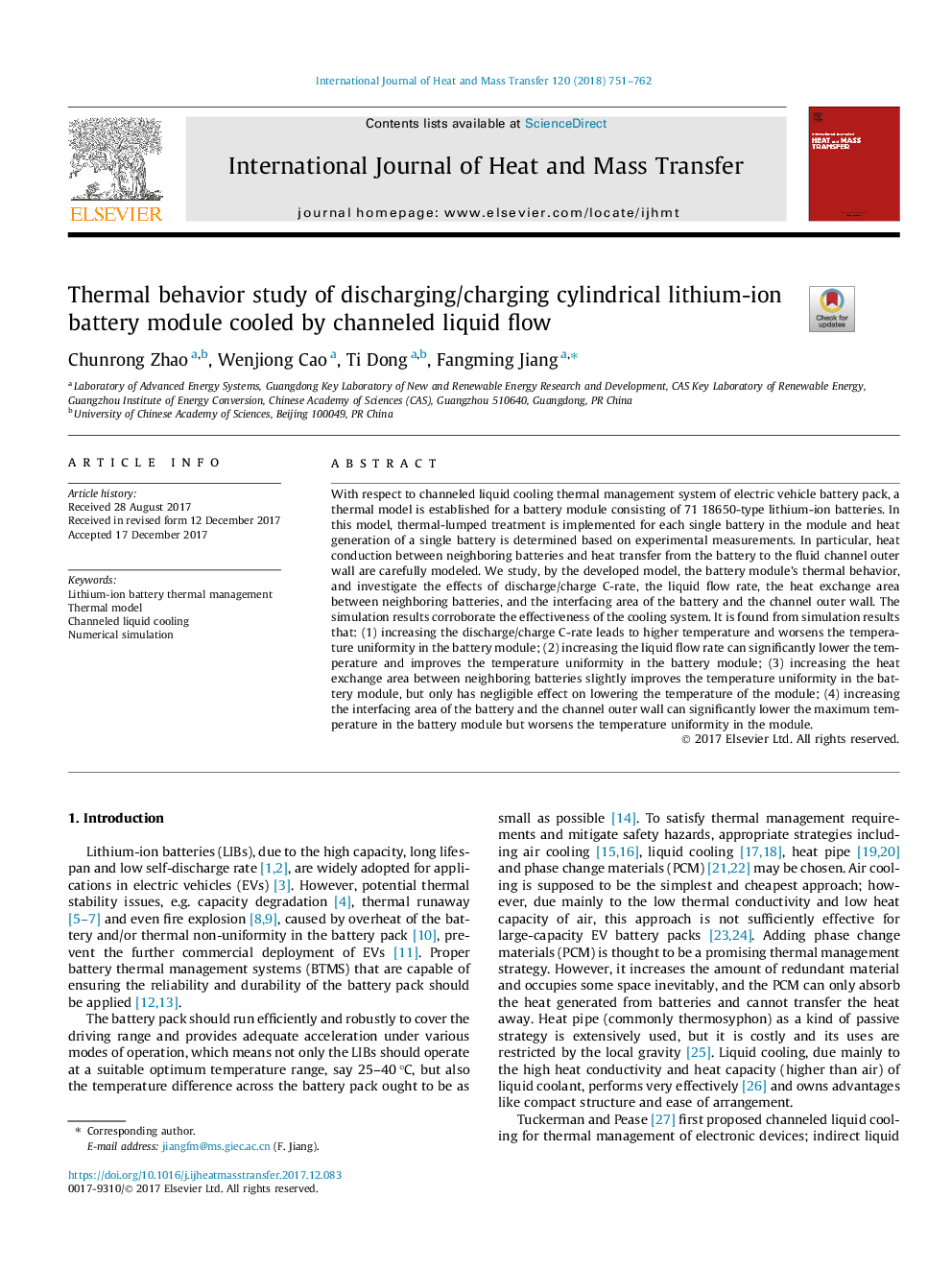| Article ID | Journal | Published Year | Pages | File Type |
|---|---|---|---|---|
| 7054641 | International Journal of Heat and Mass Transfer | 2018 | 12 Pages |
Abstract
With respect to channeled liquid cooling thermal management system of electric vehicle battery pack, a thermal model is established for a battery module consisting of 71 18650-type lithium-ion batteries. In this model, thermal-lumped treatment is implemented for each single battery in the module and heat generation of a single battery is determined based on experimental measurements. In particular, heat conduction between neighboring batteries and heat transfer from the battery to the fluid channel outer wall are carefully modeled. We study, by the developed model, the battery module's thermal behavior, and investigate the effects of discharge/charge C-rate, the liquid flow rate, the heat exchange area between neighboring batteries, and the interfacing area of the battery and the channel outer wall. The simulation results corroborate the effectiveness of the cooling system. It is found from simulation results that: (1) increasing the discharge/charge C-rate leads to higher temperature and worsens the temperature uniformity in the battery module; (2) increasing the liquid flow rate can significantly lower the temperature and improves the temperature uniformity in the battery module; (3) increasing the heat exchange area between neighboring batteries slightly improves the temperature uniformity in the battery module, but only has negligible effect on lowering the temperature of the module; (4) increasing the interfacing area of the battery and the channel outer wall can significantly lower the maximum temperature in the battery module but worsens the temperature uniformity in the module.
Keywords
Related Topics
Physical Sciences and Engineering
Chemical Engineering
Fluid Flow and Transfer Processes
Authors
Chunrong Zhao, Wenjiong Cao, Ti Dong, Fangming Jiang,
